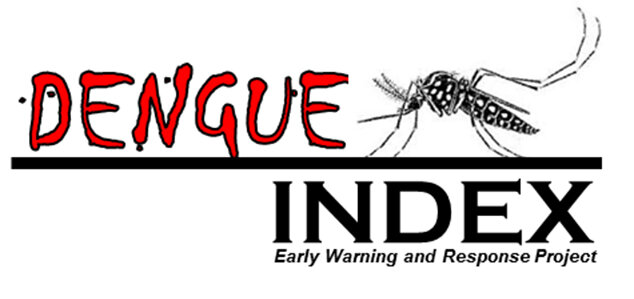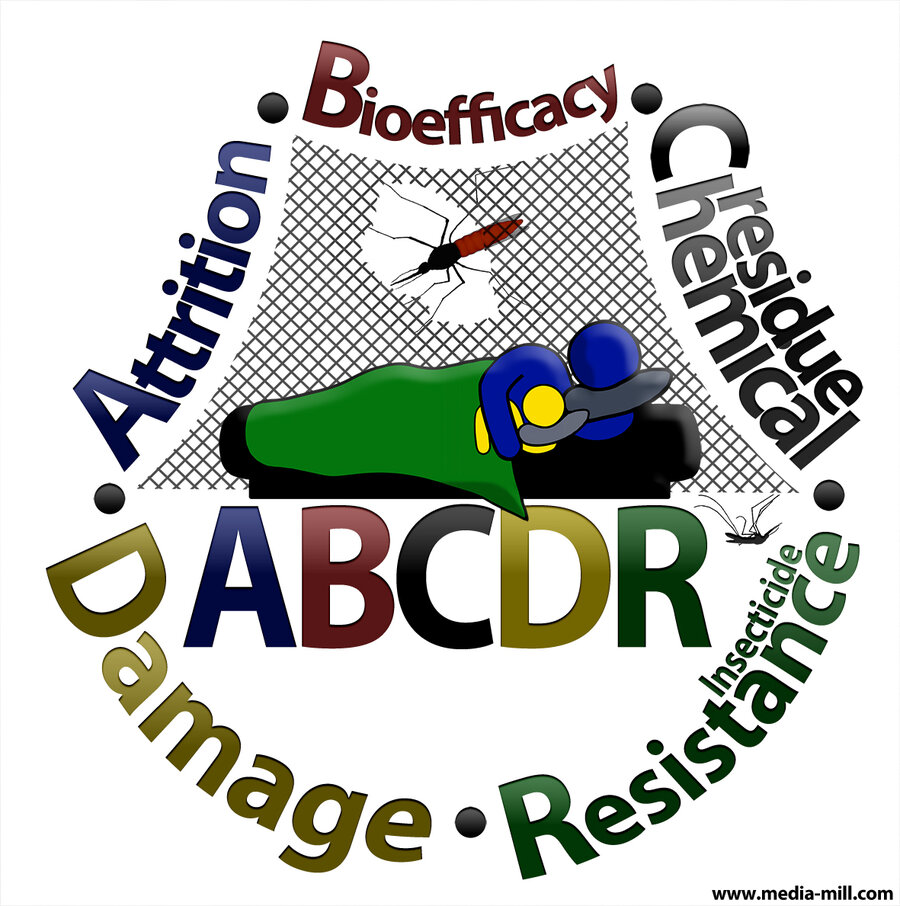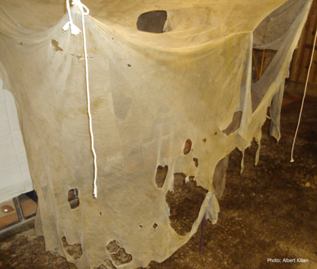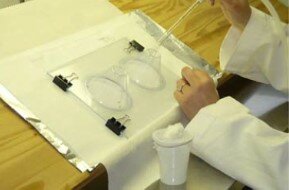About the Water and Health group
The Water and Health group engages in research activities aimed at understanding, preventing, and mitigating the impact of water-related diseases on public health globally.
Water-related diseases have been classified into waterborne (e.g. diarrheas), water-related vector borne (e.g. dengue, malaria), water-based (e.g. schistosomiasis), and hygiene related water-washed (e.g. trachoma).
Specific research projects focus on spatial and temporal distribution of mosquito vectors, insecticide resistance, vector control options, integrated disease control such as dengue and diarrheal control, community vulnerability and exposure, knowledge attitudes and practices studies. More recently, the group is involved in research on how climate change, land use, zoonotic pathogens, and pandemic preparedness affect human health.
The Water and Health group is leading and co-leading two projects on pandemic preparedness in Southeast Asia:
The main objective of the PANDASIA project, funded by Horizon Europe, is to investigate potential pandemic drivers along nature-rural-urban gradients through a comprehensive collection of social and biological data and predictive modelling of zoonotic spillover rates and disease emergence in high-risk settings in Thailand. The research will also involve community driven co-created interventions and communication strategies to improve pandemic health literacy and preparedness among local communities and public health authorities.
The second project, PANDA funded by the VW Foundation, aims to enhance current knowledge of the processes and interactions at the human-animal-environment interface on zoonotic diseases in Thai-Lao border regions. This knowledge will advance the capacity of the communities for pandemic preparedness, prevention, and control.
Both projects apply a holistic framework following the principles of One Health.
The Water and Health group has coordinated or participated in the following externally funded research projects:
– Pandemic literacy and viral zoonotic spillover risk at the frontline of disease emergence in Southeast Asia to improve pandemic preparedness
- Funding: EU Horizon Europe
- Budget: € 3,519,676
- Duration: 2023-2027
PANDASIA will apply transdisciplinary lens of various disciplines; social science, wildlife, virology, epidemiology, and data science to develop evidence-based policy to prepare for and prevent the next pandemic.
It will dive into the One Health triangle of Human, Animal and Environment in Thailand and will develop predictive models of potential drivers of disease emergence. Using real-world data, PANDASIA will further pioneer health and pandemic literacy intervention strategies tailored to address the specific Thai context.
The ultimate aim of PANDASIA is to reduce the risk of future pandemics, by developing better knowledge of zoonotic spill over and consequently reducing its burden on human health. Understanding spill over dynamics and threats at local levels in emerging disease hotspot, biodiverse rich region such as Southeast Asia, is important to improve the national (Norwegian), regional (European) and global level of pandemic preparedness and readiness.
Read more about the PANDASIA project– School and community-based student-driven dengue vector control and monitoring in Myanmar: A cluster randomized controlled trial
- Funding: Research Council of Norway
- Duration: 2019-2022 (originally 2024, terminated early)
– Determination of entomological indices to assess dengue transmission, predict dengue outbreaks, and evaluate vector control interventions

Partners
- Norwegian University of Life Sciences (NMBU)
- Khon Kaen University (KKU)
- Office of Disease Prevention and Control, no. 7, Khon Kaen, Ministry of Public Health (ODPC7)
- London School of Hygiene and Tropical Medicine (LSHTM)
Participants
- Hans J. Overgaard, PI, NMBU
- Chamsai Pientong, Assoc. prof. co-PI, KKU
- Sasithorn Tangsawad, co-PI, ODPC7
- Neal Alexander, co-PI, LSHTM
- Kesorn Thaewnongiew, ODPC7
- Michael J. Bangs, independent researcher
- Tipeka Ekalaksananan, Assoc. prof. KKU
- Thipruethai Phanitchat, postdoc, ODPC7
- Sirinart Armoseree, postdoc, KKU
- Benedicte Fustec, PhD student, University of Montpellier, France
- Dominique Cerqueira, PhD supervisor
- Vincent Corbel, PhD supervisor, Research Professor at IRD and University of Montpellier, France
Project summary
Dengue fever is the most rapidly spreading mosquito-transmitted viral disease in the world. It causes ca. 390 million infections and 22,000 deaths annually in >100 countries. There is currently no cure and a recently licensed vaccine does not give complete protection.
Disease prevention is done by mosquito vector control. Outbreaks occur periodically in most endemic countries, but outbreak detection is not accurate or timely enough to initiate control interventions in time. Critical gaps in knowledge remain. There is an urgent need to develop cost-effective and practical tools that can reliably measure dengue transmission and predict outbreaks.
The project will assess human exposure to mosquito bites by detecting antibodies to mosquito saliva in human blood samples and detect dengue virus in mosquito adults and pupae. The project will be done during 2016-2019 in northeastern Thailand. It employs an integrated approach, where Study 1 is a prospective hospital-based case-control study (yr 1) to evaluate indices and dengue risk factors in positive and negative households. Study 2 is a cluster randomized controlled trial (yr 2-3) applying these indices to assess the effect of a vector control intervention consisting of treating household containers with a pyriproxyfen-spinosad mixture on epidemiological and entomological outcomes.
The anticipated results will help authorities to forecast epidemics to plan and execute appropriate and timely interventions.
The project is a partnership of international and national experts in the fields of entomology, virology, immunology, and epidemiology working with the Ministry of Public Health. Capacity building is an integral part of the project.
As of November 2016, data on more than 100 human cases and controls in Study 1 had been collected, including blood samples, adult and immature mosquitoes, and household information. Data analysis is ongoing.
Objectives
Long-term primary objective:
- Contribute to the development of practical early warning systems for dengue epidemics by evaluating novel entomological and immunological indices that accurately represent dengue incidence.
Specific objectives:
- Assess the accuracy of indices in identifying dengue positive and negative households (Study 1).
- Identify risk factors that may distinguish dengue positive from dengue negative households (Study 1).
- Assess the relationships between indices and dengue incidence longitudinally (Study 2).
- Assess the relationships between indices and the impact of vector control interventions (Study 2).
This study will be carried out in Khon Kaen and Roi Et provinces in north-eastern Thailand. It will employ a prospective hospital-based case-control study, comprising epidemiological, entomological, immunological, and virological methodologies. The project is organized into four work packages:
- WP1. Epidemiology: Dengue surveillance, clinical case detection, human blood sample collections (including blood spots for WP3), and DENV and serotype detection.
- WP2. Entomology: Mosquito collections, DENV detection in mosquitoes, climatic and environmental data collection, vector control intervention.
- WP3. Immunology: Dried human blood spot samples (collected under WP1) analyzed in the laboratory to assess human exposure to Aedes mosquito bites.
- WP4. Data Management and Statistical Analysis: Logistic regression analysis to identify factors, in particular entomological variables, associated with risk of dengue.
– Insecticide resistance in malaria vectors in Thailand and Laos
- Funding: The Global Fund to Fight AIDS, Tuberculosis, and Malaria
- Duration: 2013-2016
- Coordinator: Institut Pasteur de Laos
– Combining indoor residual spraying and long-lasting insecticidal nets for preventing malaria: Cluster randomised trial in Ethiopia.
- Funding: Research Council of Norway
- Duration: 2012-2018
- Coordinator: University of Bergen (UiB)
– Healthy Schools: Reducing Dengue and Diarrheal Diseases in Primary Schools in Colombia
- Funding: Research Council of Norway
- Budget: NOK 4,700,000
- Duration: 2010-2014
HealthPlatform is the short title of an initiative funded by the Research Council of Norway (RCN), to develop a scientific and educational collaborative platform between the Norwegian University of Life Sciences (UMB) and the Universidad El Bosque (UED) in Colombia to promote innovative scientific research, capacity building, and student exchange on water, environment, sanitation, disease epidemiology, and health. The current project forms a first initiative to support the collaborative platform between the parties.
Collaborating universities
The project will be implemented in collaboration with international and national partners and stakeholders. The project team is built up by researchers from the following collaborating universities:
- Universitetet for miljø- og biovitenskap (UMB)
- Universidad El Bosque, Bogota, Colombia
- Liverpool School of Tropical Medicine
- London School of Hygiene and Tropical Medicine
Objectives and research hypotheses
Long-term objective:
- Contribute to improved health and welfare in Colombian school children.
Specific objectives (project purpose):
- Investigate the impact of community and school-based control interventions on the prevalence of dengue and diarrheal diseases in school children, dengue mosquito vector populations, and drinking water quality.
The research hypotheses of this project are:
- The implemented interventions will significantly reduce the number of cases of diarrheal disease and dengue fever, water contamination, and dengue mosquito infestation compared to pre-intervention situation and between interventions and controls.
- Stored water (in schools and in children’s households) constitutes a significant risk for diarrheal illnesses.
- Aedes aegypti commonly breeds in stored drinking water containers.
- Increased microbial contamination of stored water increases production of Ae. aegypti.
Project summary
Diarrheal diseases and dengue fever are major global health problems resulting in millions of deaths every year and billions of people live in risk areas. In Latin America both diseases are prevalent and infection rates are high. Where provision of clean water is inadequate, water storage is crucial. Fecal contamination of stored water is a common source of diarrheal illness. Stored water is also a potential breeding site for dengue vector mosquitoes.
Little is known of the role of stored water for the dual risk of diarrhea and dengue. Casa Segura or ‘Safe House’ is a proactive vector control approach using low cost interventions to prevent dengue transmission in the home environment.
Here we use the Casa Segura concept to include interventions related to diarrheal diseases adapted for school settings; we call it Escuela Saludable or ‘Healthy School’. We will carry out randomized controlled trials using integrated water management and dengue vector control interventions in schools to assess disease outcome, water quality, mosquito vector density, and potential changes in people’s knowledge, attitudes and practices.
The anticipated results will protect the health of school children in Colombia by reducing the prevalence of diarrheal diseases and dengue fever. The project will also reveal functional interrelationships between the two diseases, by identifying water management practices and key vector producing container types.
Publications
- A list of publications from the HealthPlatform project is available on the Research Council of Norway's project website.
– Link between Diarrhea and Dengue: Fecal contamination and dengue mosquito production in household water containers in Southeast Asia
- Funding: Research Council of Norway
- Budget: NOK 6,000,000
- Duration: 2009-2015
Project summary
Diarrheal diseases and dengue fever are major global health problems resulting in millions of deaths every year and billions of people live in risk areas. In communities where provision of clean water is inadequate, storage of water for domestic use is crucial. Fecal contamination of stored water is a common source of diarrhea. Stored water is also a potential breeding site for dengue mosquitoes. Little is known of the role of stored household water for the dual risk of diarrhea and dengue.
The aim of this interdisciplinary project is to assess health risks associated with household water storage by identifying relationships between household water management, contaminated drinking water, and mosquito production in household water containers. The project will identify water management practices and key vector producing container types, quantify fecal contamination and its effect on mosquito production. Results will assist in development of integrated disease control strategies.
The expected outputs of the project are:
- 1) household water management practices in selected study communities identified;
- 2) Key container types identified from which the majority of Aedes aegypti emerge;
- 3) Total coliforms and E. coli detected and quantified in water stored in domestic containers; and
- 4) Relationship between coliform contamination of drinking water and mosquito production in household storage containers identified and quantified.
Objectives
Long-term goal:
- Increased understanding of relationship between causes of diarrheal disease and dengue fever for potential development of integrated disease control strategies.
Specific objectives (project purpose):
- Assess health risks associated with household water storage by identifying relationships between household water management, contaminated drinking water, and Aedes aegypti production in household water storage containers.
Approaches, hypotheses and choice of methods
A literature search reveals no studies where the two diseases have been studied together and how one affects the other. Thus, little is known of the role of stored household water for diarrhea and dengue risk. This project seeks to clarify these issues by addressing the following questions: How is household water collected, transported, stored and used? Is contaminated household water a major determinant for diarrheal infections? How does piped water and container lids affect fecal contamination and dengue mosquito production? Which preventive practices exist? Are the key container types of importance for adult Ae. aegypti emergence used as drinking water containers? Does microbially contaminated drinking water increase production of Ae. aegypti and in larger mosquitoes?
The responsibilities for control and prevention of dengue and diarrhea often lie under separate national departments with little communication or collaboration. By investigating the issues illustrated above in an integrated manner the potential for developing integrated and cost-efficient control strategies may become apparent. The interdisciplinary nature of this project, combining ecological, microbiological, socio-economic and cultural aspects will reveal potential synergies and solutions for integrated control. The project will also be an incentive to undertake similar studies in other countries under other socioeconomic and cultural conditions, thus contributing to solutions to disease problems that are of global concern.
The research hypotheses of this project are therefore:
- Bacterial contamination of household water occurs during collection, transport, and handling of water.
- Stored household water constitutes a significant risk for diarrheal infections.
- Ae. aegypti commonly breeds in household drinking water containers.
- Piped water availability reduce contamination of stored water and breeding of Ae. aegypti.
- Covered household water containers reduce water contamination and mosquito breeding.
- Increased microbial contamination in household drinking water containers increase production of Ae. aegypti and result in larger mosquitoes.
Both quantitative and qualitative approaches will be used to address these problems and hypotheses. The methods used here are commonly used in both diarrhea and dengue field and laboratory research. Social research methods will be used to collect information on socioeconomic status and cultural-dependent water management and health-related practices.
Publications
- A list of publications from the DiaDen project is available on the Research Council of Norway's project website.
– The useful life of bednets for malaria control in Tanzania: Attrition, Bioefficacy, Chemistry, Damage and insecticide Resistance.

Partners
- London School of Hygiene and Tropical Medicine, UK (LSHTM)
- Ifakara Health Institute, Tanzania (IHI)
- National Institute for Medical Research, Tanzania (NIMR)
- National Malaria Control Program, Ministry of Health and Social Welfare, Tanzania
- Swiss Tropical and Public Health Institute (Swiss TPH)
Participants
- Hans J. Overgaard, Principal Investigator, Norwegian University of Life Sciences
- Lena M. Lorenz, Project coordinator, LSHTM
- Sarah Moore, Research scientist, Swiss TPH/IHI
- Jason Moore, Logistician, LSHTM/IHI
- Zawadi Mageni, PhD student, LSHTM
- Dennis Massue, Phd student, University of Basel/Swiss TPH
Project summary

A too torn net Photo: Photo: Albert Kilian Long-Lasting Insecticidal Nets (LLINs) are the front line malaria vector control tool in sub-Saharan Africa (SSA), with most countries adopting universal coverage campaigns with free or subsidised nets. It is essential to understand the effective life of LLINs: that is the cost per year of protection that they provide. Public health policy makers may then use this information to select the most cost effective nets (rather than the cheapest that might not last very long), and estimate the correct timing of repeated distribution campaigns to ensure that maximal health gains are maintained. However, there is only limited knowledge from few countries of the effective life of LLINs under user conditions.
This study investigates LLIN effectiveness in eight districts of Tanzania, selected for their demographic, geographic and ecological representativeness of the country as a whole.
Objectives
Main objective:
- To determine the useful life of LLINs from 1) a retrospective survey of Olyset® nets distributed by the Tanzanian Government two-to-four years previously; and 2) a prospective study of three different LLIN products (Olyset®, Permanet®2.0 or Netprotect®) over three years using a nation-wide sampling framework across eight districts in Tanzania.
Specific objectives:
- Determine Attrition (net loss) of LLINs.
- Determine Biological efficacy of LLINs by assessing mosquito mortality through WHO-approved methods and new alternative methods (for validation of WHO methods).
- Determine Chemical residues in LLINs through High Performance Liquid Chromatography (HPLC).
- Determine physical Degradation and fabric integrity of LLINs through measuring holes and tears in the fabric.
- Determine insecticide Resistance in the main malaria vectors in study locations in collaboration with the NIMR insecticide resistance monitoring scheme using WHO susceptibility assays.
- Develop a GIS model for use by NMCP for insecticide resistance monitoring, with flexibility to be applied to other functions such as disease incidence or LLIN coverage
- Using the GIS model, identify geographical variations in ABCD & R components to determine specific problem areas for potential success/failure of each and combinations of the components.
- Training two Tanzanian students to PhD.
Methods

WHO cone bioassays Photo: World Health Organization We are using a two-stage approach: Firstly, LLINs from recent net campaigns (Under 5 and Universal Coverage Campaign) will be evaluated retrospectively. Those sampled households will then be provided with one of three leading LLIN products (Olyset®, Permanet®2.0 or Netprotect®) that will be followed up for three years in a prospective study to compare the performance of the three LLIN brands under user conditions at 9, 21, 29 and 36 months post-distribution at a nationally representative level.
We will develop a GIS database to understand potential spatial reasons for LLIN loss and deterioration; and to monitor insecticide resistance across the country, allowing for timely decision making in insecticide resistance management for vector control at the national level. We are also extending the current NIMR mosquito Insecticide Resistance monitoring program into additional districts and use these data sets to provide GIS maps for use in health surveillance and decision making by the National Malaria Control Program (NMCP).
Relevance to Tanzanian Public Health

Household interviews Photo: Hans Overgaard The data collected will be of importance to policy makers and vector control specialists both in Tanzania and the Sub Saharan African region to inform best practice for the maintenance of high and cost-effective coverage and to maximise current gains in malaria control. We will make the data available to stakeholders including NMCP and their collaborators: MEDA, Natnets and WHO Vector Control Working Group on a 12 monthly basis throughout the life of the project to ensure that decision-making can be made in a timely fashion as data become available. We are bringing together a highly skilled multi-disciplinary team that will support Tanzanian vector control both now and in the future through the development of the GIS database and training of two Tanzanian students to PhD level.
– Malaria mosquito vector control using plant extracts
- Funding: Research Council of Norway
- Duration: 2012-2014
Participants
- Hans Jørgen Overgaard, NMBU (coordinator)
- Berit Smestad Paulsen, University of Oslo
- Dr. Fabrice Chandre, Institut de Recherche de Developpement (IRD), MIVEGEC, Montpellier, France.
- Dr Vincent Corbel, Institut de Recherche de Developpement (IRD), MIVEGEC, Montpellier, France.
- Mr. Bertin Mikolo, Marien Ngouabi University, Brazzaville, Republic of Congo.
Project summary
Malaria is the single most important cause of ill health, death and poverty in sub-Saharan Africa. It is estimated that there are as many as 300 million acute cases worldwide each year, resulting in one million deaths.
Ninety percent of these deaths occur in sub-Saharan Africa, and most of victims are children aged less than five years. The disease is a major obstacle to social-economic development in Africa.
Current malaria mosquito control is mainly based on chemical interventions, such as insecticides impregnated bednets and indoor residual spraying
Malaria control is challenging because Plasmodium parasites are becoming resistant to widely available, affordable and safe first line treatments such as chloroquine and fansidar; the mosquito vector, Anopheles, is increasingly becoming resistant to insecticides. As a result insecticide resistance to the available insecticides is becoming a real threat to sustained malaria control and elimination. In addition many countries in Africa lack the necessary infrastructure and resources to manage and control the disease.
An important responsibility of the research community is, therefore, to explore and identify new active insecticidal compounds for use in vector-borne disease control. The objective of this project is to identify and study traditionally used botanical insecticides and repellents with potential for development of vector control compounds for sustainable malaria control. We will document traditional knowledge on plants used to kill and repel mosquitoes in local communities in the Congo Rainforest
We will continue our investigations of insecticidal activity and repellent effect of the tree species Zanthoxylum heitzii against mosquito vectors – a work that commenced in 2011 through financial support by FUGE. Further, we will investigate the ecology, spatial distribution, and chemical composition of Z. heitzii. The anticipated applicability of the findings of this project will potentially lead to new insecticides and repellents for vector control in malaria, dengue, and other vector borne diseases. Further, documentation of traditional ethnobotanical knowledge is crucial before such knowledge becomes lost. Knowledge of the natural resource base of potentially commercially interesting harvestable plant species is of importance for development of natural resource management strategies.
By securing the natural resource base locally, drawing on human capital and initiatives in communities, and achieving sustainable and effective malaria control, the findings of this project may contribute to promoting employment opportunities, local business, and improved community health.
Relevance
The current application requests continued support from the Research Council of Norway (RCN)to develop botanical insecticides for malaria mosquito control. This proposal is an outcome of the project malaria control in Africa using plant extracts - Project establishment support supported by FUGE-Bioprospektering (#209508/S10). Based on this research we have successfully identified new compounds in the target plant, Zanthoxylum heitzii, from Congo and determined insecticidal effects of those compounds (submitted to Plant Management Science. The proposed project is relevant to the FUGE program by strengthening national collaboration and improving Norwegian research capacity on malaria, medical entomology, chemistry, and sustainable development. The project’s main focus is basic research in biology, one of FUGEs three thematic areas, but is also linked to medical research, another priority area of FUGE. We will also study the natural resource base and conservation status of specific plant species of interest for malaria control, thereby addressing the third of FUGEs thematic areas. With new support we will continue and expand this work by strengthening the bilateral collaboration with the Republic of Congo (Marien Ngouabi University), and also initiate a new collaboration with Institut de Recherche de Developpement (IRD), MIVEGEC group, Montpellier, France.
Objectives
Primary objective:
- Investigate traditionally used botanical insecticides and repellents in the Republic of Congo for the development of vector control compounds for sustainable malaria control.
Specific objectives:
- Identify and document traditional use of plants used as insecticides and repellents in the Congo by ethnobotanical investigations.
- Determine insecticidal and repellent activity against Anopheles gambiae and Aedes aegypti adults and larvae of bark, leaves, seeds, and root bark of Zanthoxylum heitzii.
- Determine the chemical composition of fractions and constituents of Z. heitzii plant parts.
- Assess ecological requirements and geographical distribution of Z. heitzii in the Congo.
– Modeling of malaria risk using hydrological, topographic, and climatic variables in Bangladesh
- Funding: Research Council of Norway
- Duration: 2011-2012
Project Aims
- This project aims to develop a risk model using hydrological, topographic, climatic, and entomological parameters.
- The model will be capable to simulate overland flow, pooling and evaporation from open water bodies.
- Inundations will be estimated from runoff patterns and local topography.
Long-term goal (project purpose):
- Contribute to improved health and welfare of people in Chittagong Hill Tracts, Bangladesh.
Specific objective (project purpose):
- Determine the role of local topographic and climate variables in the spread of malaria in Chittagong Hill Tracts, Bangladesh.
Project Summary
Malaria is heterogeneously distributed in 13 endemic districts of Bangladesh, potentially as a result of variations in ecological settings, socio-economic status, land cover, and agricultural practices.
Malaria control relies in Bangladesh only on treatment and supply of bed nets. It is highly endemic in Chittagong Hill Tracts (CHT) which is covered with forests and hills.
Major transmission takes place during the rainy season. Models using hydrological, climatic and topographic variables for the prediction of malaria transmission have never been developed for Bangladesh. Due to the unique ecological settings in CHT, hydrological models developed in other parts of the world, particularly in Africa, are neither feasible nor cost effective for Bangladesh. In general, any model should consider environmental and entomological risk factors, bed net coverage and usage, health facilities, malaria control efforts, and other socio economic information.
Currently, no such model exists anywhere, and such a model would risk becoming overly complicated. A model based on local ecology and risk factors is essential for malaria control in the CHT, Bangladesh. This project aims to develop a risk model using hydrological, topographic, climatic, and entomological parameters. The model will be capable to simulate overland flow, pooling and evaporation from open water bodies. Runoff will be estimated using runoff ratios or a curve number approach. Inundations will be estimated from runoff patterns and local topography. The model will help explain malaria risk on a small-scale.
The major outcomes will be an easy to use hydrological-malaria model and increased knowledge of malaria risk factors in the CHT in Bangladesh. Knowledge arising from this project will be invaluable for research capacity development on malaria control in Bangladesh. The proposed model will be instrumental for Bangladesh to assist in forecasting, improve malaria control decisions, and reduce disease outcome.
Approaches
Malaria control can only be successful if the right methods are used at the right time in the right place. Topographic attributes provide physically and ecologically meaningful description of how topography affects malaria risk via suitability for potential mosquito breeding. Exploring the relationships between these environmental parameters and malaria incidence in Bangladesh will provide accurate background information for the model.
The proposed model will be instrumental for Bangladesh to assist in forecasting, improve malaria control decisions, and reduce disease outcome.
A GIS-based analysis of runoff generation and accumulation will enable an assessment of current and future risk patterns for malaria. The GIS-analysis involves the identification of runoff path ways and areas prone to inundation. It will prove useful in identification of areas within communities at higher transmission risk at the household level.
The hydrological model will predict locations of rainwater pools after rainstorms, and their persistence. The predicted water locations will be linked to the characteristics of field-identified breeding sites and their potential mosquito productivity. The experiences and knowledge originating from this project will be valuable for all of CHT. Knowledge arising from this project will be invaluable for research capacity development on malaria control in Bangladesh. The use of high resolution images, GIS, hydrological techniques, climatic parameters and malaria transmission, will expand the current knowledge of risk model using hydrological techniques and generate new hypothesis in this field.
Mohamed Shelil
Advisor
- Project manager
